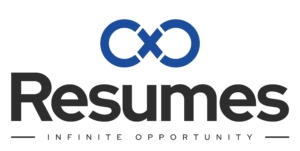Your Career Is No Different Than Any Small Business
You are the product, and your employer is the market to whom you provide services. You have competition in the form of other people offering services that might be cheaper or superior to yours. Your personal business is also susceptible to other threats, like a change in the needs of your customer/employer.
If you don’t plan ahead, you could become obsolete.
Like many products, yours has a limited shelf life. Likewise, you’ll need to maximize your profitability and plan for a time when you are no longer willing or able to produce.
Like any successful small business, you must begin with the end in mind. No more meandering through life. You’ll think strategically and act with conscious intentionality. You’ll set an overarching goal and backward plan the steps you’ll need to take to reach each milestone along your long-term plan. You’ll waste no time. Only do things that propel you progressively toward your long-range plan.
As a business owner, you understand the necessity of being loyal to your customers without placing all your eggs into a single basket. You’ll continually increase your marketability through continued education to maintain your competitive edge. To minimize your risk, you’ll maintain an active personal brand that will:
- Substantially limit the time you’d be out of work if you lose an opportunity.
- Improve your perceived market value by demonstrating your thought leadership.
- Control the public conversation about you by communicating a unified personal brand image that showcases your unique value with clarity and distinction in the context of your personally inspired professional goals.
The primary difference between an employee’s mindset and that of a business owner is that the former type responds to events, and the latter creates them. Employees react to external circumstances, while owners plan ahead so that circumstances become opportunities.
Beyond not having the proper mindset, the two biggest mistakes we see an employee make when not taking ownership of their career are:
- First, they don’t have a personal business plan for their career, so they are not taking control of their future. Specifically, they don’t have a long-range plan with milestones that include specific, actionable, lofty, and time-sensitive goals.
- Secondly, they are not packaging their products correctly (or at all) or in a way that doesn’t appeal to their market—their prospective employers. They don’t consider that they should be marketing themselves by investing in personal branding services. It’s only when the employee needs to change jobs that they whip up a resume. This event-driven mentality is not typical among successful business owners but is quite familiar to employees.
A well-written resume is an integral part of a personal brand, but it is not the entirety.
The best resumes are not crafted in response to an event. Instead, they are living documents that are continuously refreshed and play their part in the personal brand. The resume is one of the important documents that work together strategically to communicate your unique value and accomplishments in the context of your next milestone along your career path.
Working for an employer can be an incredibly smart thing, or it can feel like indentured servitude. There are companies with positions that offer distinct advantages over being a traditional business owner. You can attain higher pay with much less risk. You can enjoy “business hours” with the ability to shut work off when you aren’t there. You may appreciate the ability to leverage company assets for professional growth. Your time with an employer could afford you the opportunity to specialize professionally—which could increase your income, reduce your competition, and improve your professional marketability.
Don’t become obsolete: Once you build a career progression plan use your personal brand assets to showcase your current achievements, in the context of the next step along that progression, to your professional connections.
Ben worked as a welder for an industrial plant for $30,000 a year.
The oil fracking industry took off. He took a job for $40,000 a year with an oil company. While on the job, the employer paid for this certification and training as an underwater welder. He made an internal transition to the new position as an underwater welder on a deep-sea oil rig in the Gulf of Mexico and was now earning $88,000. At the time, oil prices were skyrocketing.
The future was looking bright. A few years later, oil prices tanked. Within months, Ben and many others were laid off. Ben couldn’t find a new job as an underwater welder making the same money. After six months out of work, he worked as a shop welder with a local manufacturing company for $14 an hour. He is now making $11,000 a year less than he earned 15 years ago when he started his career.
During her Junior Year in college, Sarah attended a seminar on personal branding.
She created long-range career goals with milestones and timelines. Sarah took her first job after college with a consumer technology company. Working as a customer service representative in a call center, she earned $22,000 a year plus benefits. Unlike many college grads, she strategically targeted a position within this company because the promotion opportunities aligned with some of her career milestones.
After one year, she was promoted to team lead with an $8,000 raise annually. After one year in this position, she intentionally moved to a major company in the same industry, earning a promotion and a $ 20,000-a-year raise. She worked in this position for two years before taking a position at a different company and was now earning nearly $90,000 annually. Do the math. In just 4-years after graduation from college, Sarah earned six figures, including her benefits. She may be earning $45,000 or less if she still worked at the first company.
Sarah maintains her personal brand by including her most recent accomplishments, demonstrating her capability to accept the next level in her career progression. Even before she graduated college, Sarah paid a consultant to maintain her resume, personally branded career website, and LinkedIn profile. Over four years, she paid nearly $10,000 to maintain her personal brand. The cost breaks down 5.2% of her annual average salary over four years. She’s only getting started.
The most valuable difference between Sarah and Ben is that Sarah intentionally and strategically builds a network of professional contacts online and through industry conferences.
She reliably demonstrates her thought leadership with articles she writes and distributes on her LinkedIn profile, her personally branded website, and influential industry blogs. She creates demand for her product so that she can leverage this demand into better opportunities. Sarah drives her career as a business. She doesn’t sit idle and respond to events that happen around her.
Sarah was laid off without notice due to a corporate merger. She notified her professional network and had interviews within a week. Within 10 days of her layoff, she had a new position with a great company that included a $5,000 a year salary increase. As part of her career progression strategy, Sarah fully intends to earn a base salary of $250,000 or more within the next four years.
Who would you rather be a Sarah or a Ben?
How about a person who reacts to circumstances–whose career progression is determined by events deemed beyond personal control? Or would you rather be the kind of person who takes conscious control of their career, treats it like a business, and consequently invests in personal brand marketing?
Ready to take control like Sarah did? Begin treating your career as a business. Take the first step toward building your personal brand. Request a 15-minute complimentary consultation with CXO Resumes.


